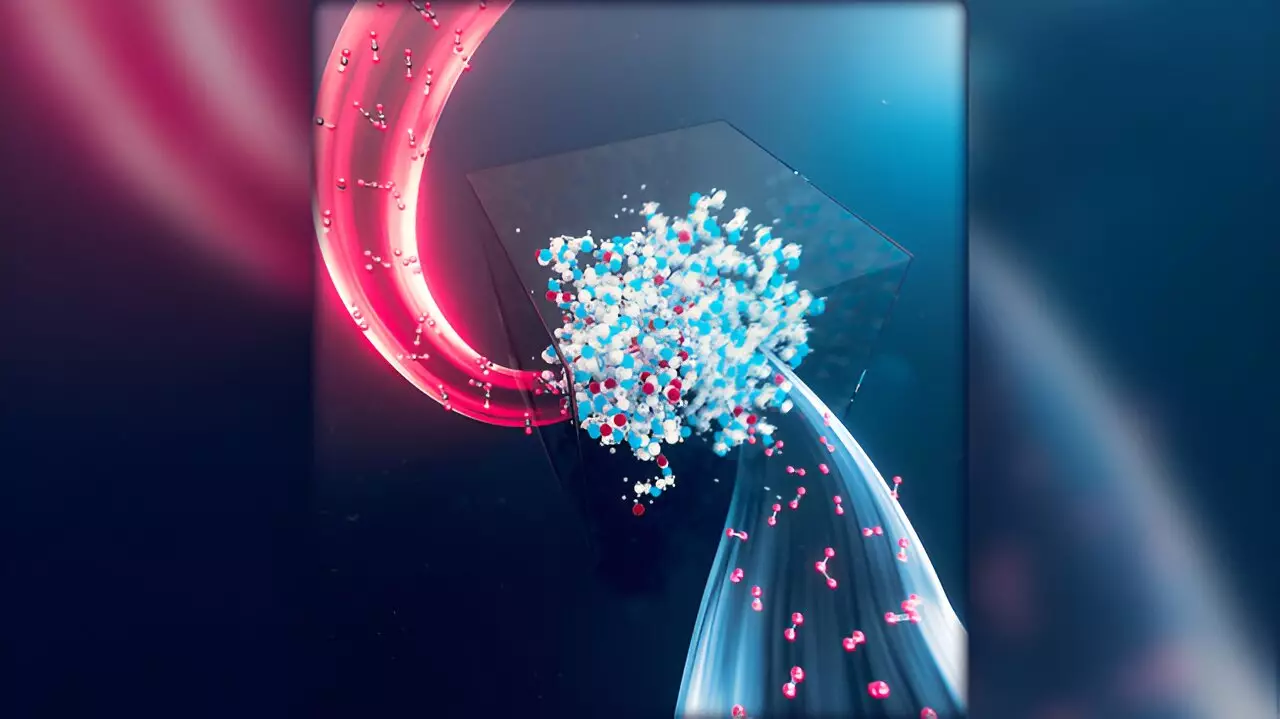Recent advancements by researchers at Lawrence Livermore National Laboratory (LLNL), in collaboration with the Georgia Institute of Technology, have opened new avenues in carbon capture technology, particularly focusing on the stability of amine-functionalized porous solid materials. As the demand for effective methods of capturing atmospheric carbon dioxide (CO2) increases, the insights garnered from this research, recently published in the Journal of the American Chemical Society, become increasingly vital. This study not only emphasizes the role of CO2 in the degradation of poly(ethylenimine) sorbents but also provides substantial groundwork for developing enhanced direct air capture (DAC) systems.
Amine-based sorbents are recognized for their unparalleled ability to capture CO2 even in extremely low concentrations, making them invaluable in direct air capture settings. Nonetheless, these materials face a critical challenge concerning their long-term stability, primarily due to oxidative degradation. The innovative research team dives into the previously unexplored effects of CO2, addressing inconsistencies that have marred previous studies. Their findings reveal that CO2 can both facilitate and hinder oxidative processes, depending on the specific environmental variables at play, including temperature and concentration.
Insights into Oxidation Kinetics
The study highlights a dualistic nature of CO2 in the context of oxidation kinetics, as articulated by lead author Sichi Li. On one hand, CO2 serves as a catalyst in oxidation reactions; on the other, it hampers the mobility of polymer branches, thus slowing radical propagation. This complex interplay creates a nuanced degradation profile for poly(ethylenimine) sorbents that researchers had not fully understood until now. By elucidating these contrasting dynamics, the study equips researchers with critical knowledge to forge a path toward more durable sorbents.
Beyond clarifying existing data discrepancies, the study offers practical recommendations for enhancing the longevity of amine-based sorbents in DAC technology. The researchers pinpoint two key factors contributing to accelerated oxidation: the mobility of polymer side chains and the presence of acidic environments. By identifying these factors, new strategies emerge, such as incorporating specific functional groups or additives aimed at decreasing polymer mobility or neutralizing acids. These approaches promise to significantly improve the resiliency of sorbents, thus advancing the efficacy of carbon capture efforts.
As climate change continues to pose a formidable challenge to global sustainability, the quest for effective carbon capture solutions becomes more pressing. The insights provided by this research not only refine our understanding of CO2’s role in oxidative degradation but also illuminate pathways to create more effective carbon-capturing technologies. This collaborative effort between LLNL and the Georgia Institute of Technology is a pivotal step toward realizing next-generation carbon capture solutions that are both efficient and cost-effective, playing a crucial role in our fight against greenhouse gases and striving towards a sustainable future.


Leave a Reply